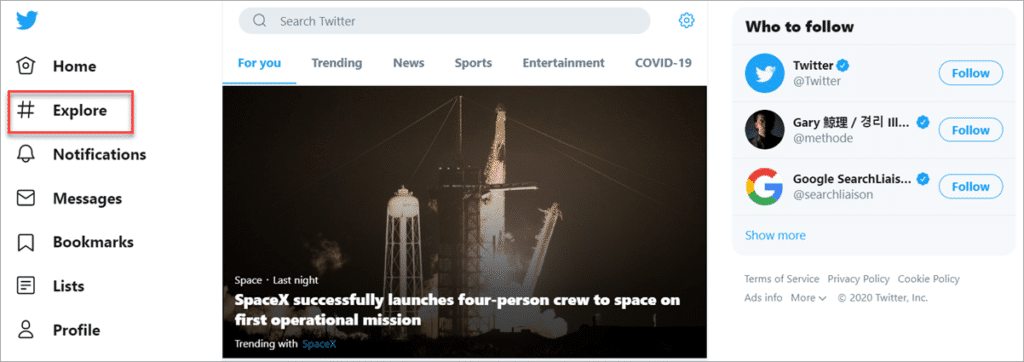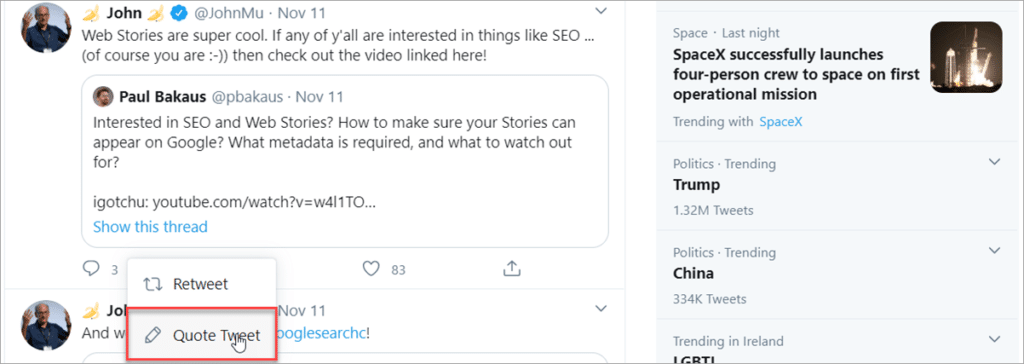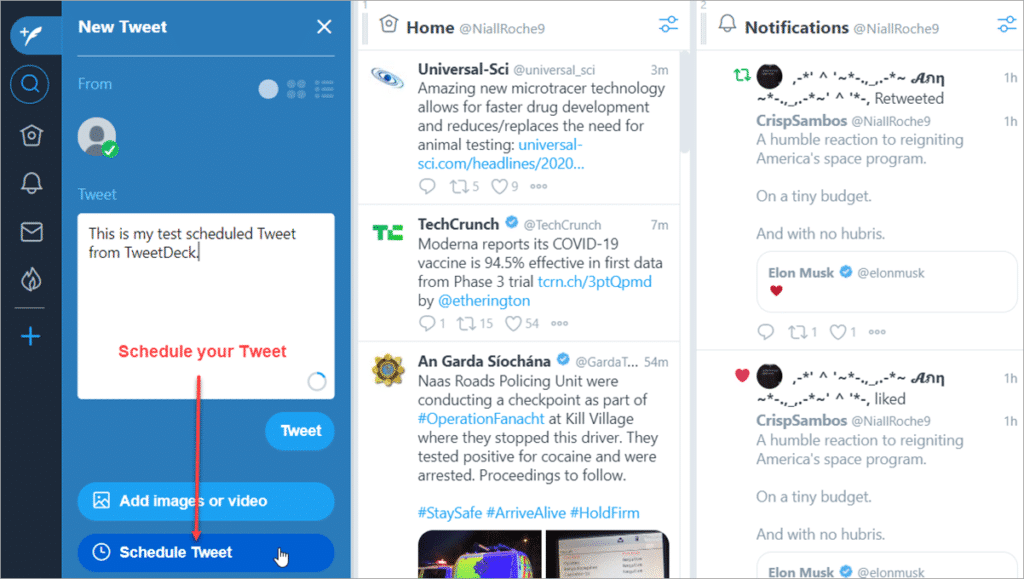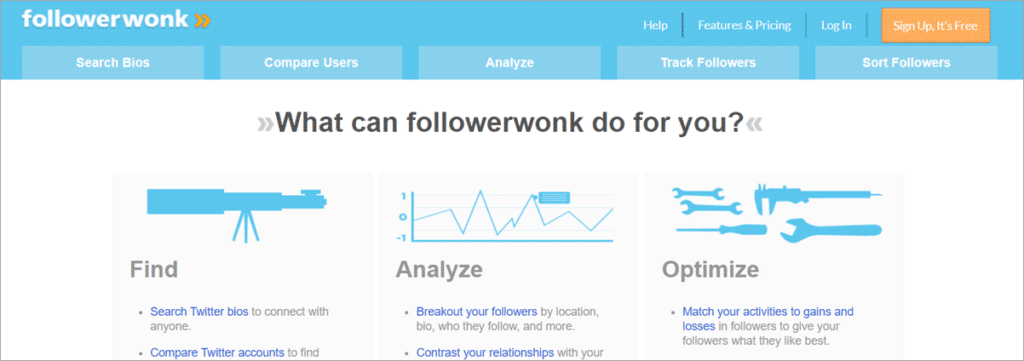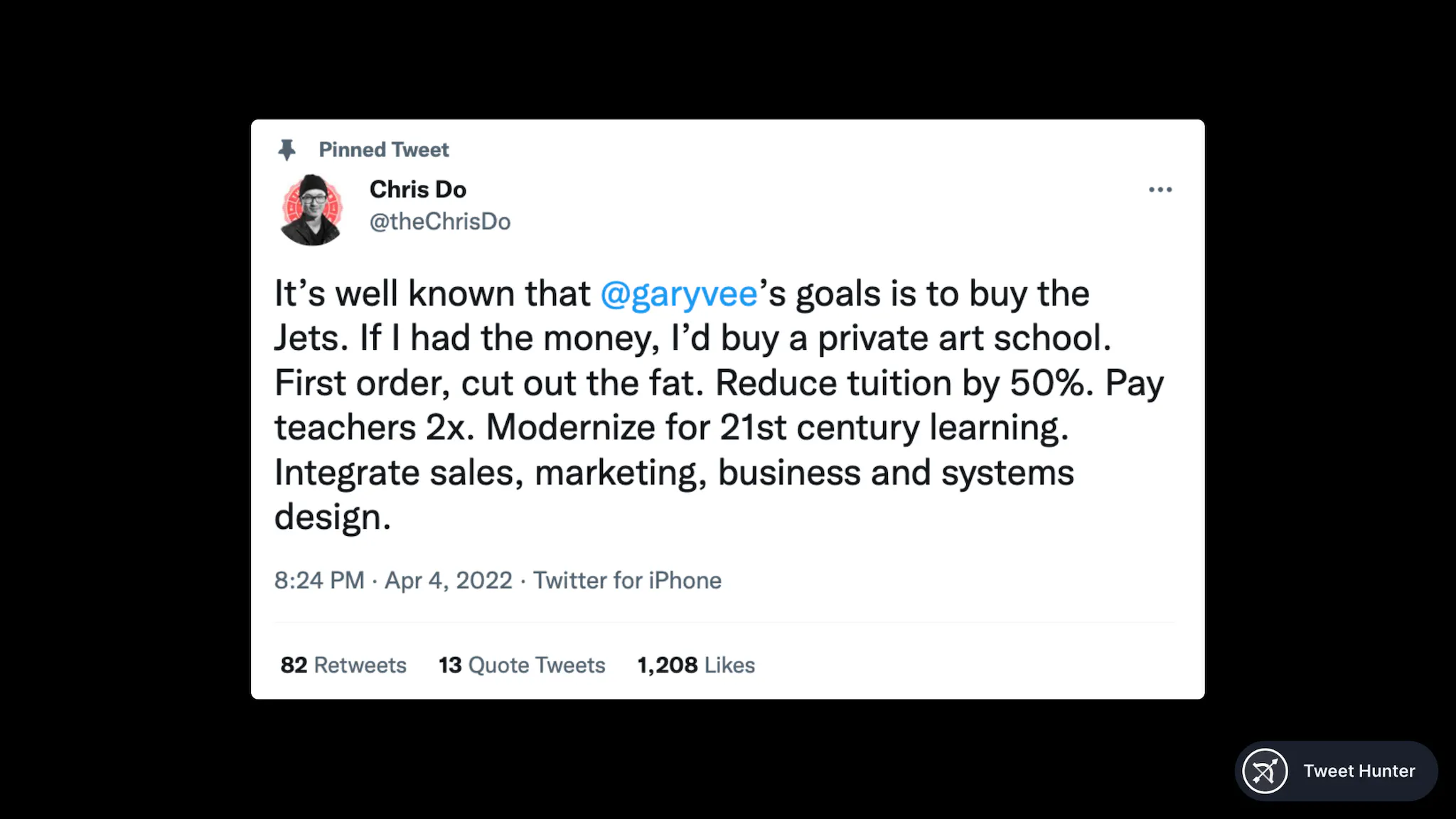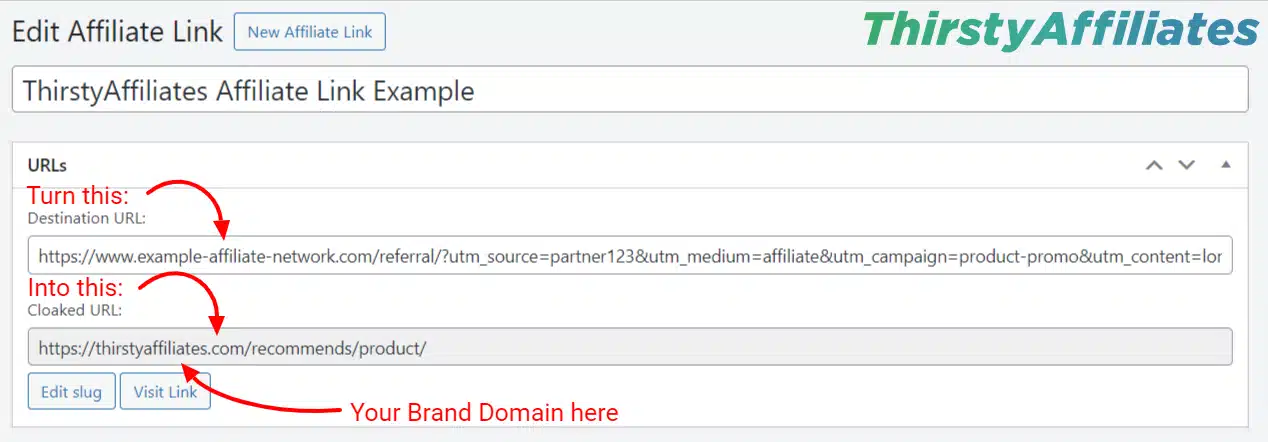When it comes to social networks, affiliate marketers usually follow the latest trends. Surprisingly, Twitter is often ignored in the world of affiliate marketing. Those self-proclaimed “gurus” who talk a lot might not mention it much; maybe they’re too busy showing off their rented Lamborghinis on other platforms.
Objectively speaking, Twitter (now X Corp) might seem like a waste of time, especially for smaller brands, as it can be overwhelming and noisy.
However, let’s look at two undeniable facts about Twitter: it has 330 million active users, and affiliates are making money there. So, let’s put aside our personal opinions and explore Twitter from a business perspective.
Table of Contents
What is Affiliate Marketing on Twitter?
Affiliate marketing is a process where you earn a commission by recommending a product or service made by a third party using an affiliate link. When someone clicks on your link and makes a purchase, you get rewarded with commissions.
Affiliate marketing on Twitter (now X Corp) is similar to other platforms. The key difference is that instead of promoting products to visitors on your website, you’re targeting your Twitter followers directly. It’s a business model where you recommend products or services to your followers through tweets, and in return, you earn a commission for every successful referral.
Whether you’re a casual tweeter or a social media pro, this can be a lucrative opportunity to leverage the trust of your followers and monetize your Twitter presence.
How to Do Affiliate Marketing on Twitter?
Twitter affiliate marketing is a great way to making money online. Here’s our 9-step strategy to help you get started:
Step 1: Set up a Twitter account
If you already had a Twitter account, you might jump to step 2. If not, go to twitter.com and click on ‘sign up.’ Fill in your name, email, and a password. When entering your name, choose the name you want to be known by on the site.
For instance, if you’re creating a Twitter account for your business, use the business name in the ‘name’ field. Next, personalize your Twitter account by adding a profile picture and a banner image. An account with these images looks more trustworthy.
If it’s for your business, use your logo as your image, similar to big businesses on Twitter. Lastly, include a link to your product, store, blog, website, or email newsletter with a call-to-action.
Make your Twitter profile as valuable as possible:
- Write a brief intro to tell your target audience who you are and what you do.
- Share your expertise.
- Include a call-to-action (e.g., join my newsletter, visit my website, buy my ebook, etc).
Here are some examples of well-developed Twitter profiles:
Lifehacker
- Twitter: @LifeHacker
- Topics: Productivity, life-improvement
You can follow Lifehacker on Twitter (@LifeHacker) for practical tips and advice. Enhance your daily life, save time, and boost productivity with their helpful content.
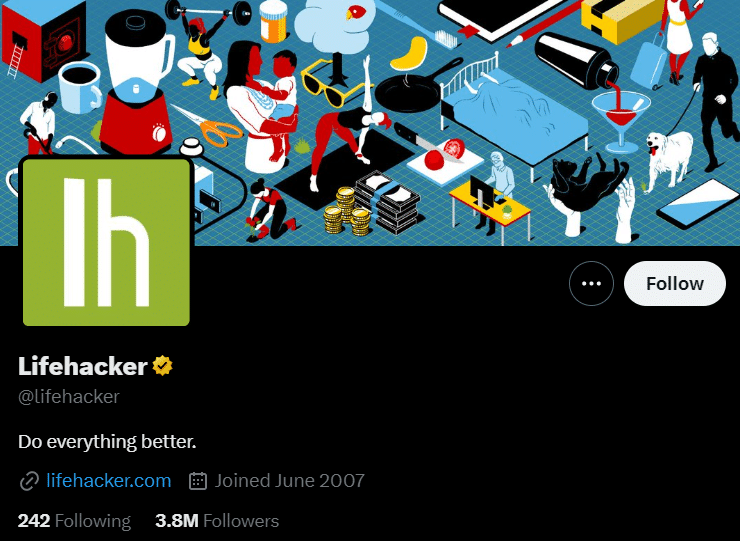
Adam Grant
- Twitter: @AdamGrant
- Topics: Human behavior, motivation, and work culture
Meet Adam Grant, an organizational psychologist, best-selling author, and TED speaker. He shares valuable insights on human behavior, motivation, and work culture on his Twitter account.
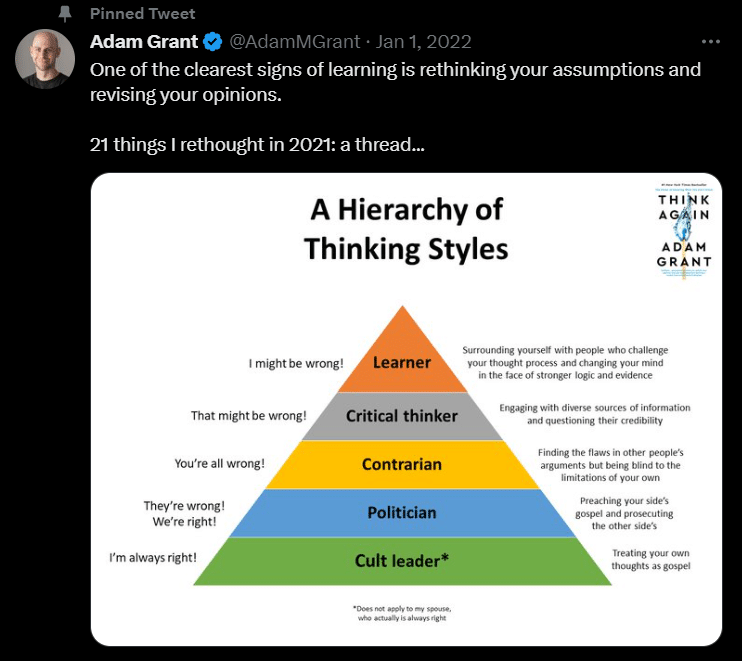
Steve Martin
- Twitter: @SteveMartinToGo
- Topics: Comedy and acting life
Steve Martin is a famous American actor, comedian, musician, and writer. He’s got a lively Twitter account.

Step 2: Find your Twitter niche
On Twitter, broad niches don’t seem to work well. So, if you want to make money with affiliate marketing, be prepared to narrow down your focus.
Instead of promoting generic “diet” products, for example, you could specialize in discussing Keto dieting. This is how you build a dedicated following—by consistently promoting a specific niche, rather than jumping between different affiliate programs every day.
If you’re unsure about picking a niche, explore what people are talking about through the ‘Explore’ page on Twitter.
Step 3: Join an affiliate program
To get started with affiliate marketing on Twitter, you need to join an affiliate program. Some affiliate networks and companies offer programs tailored for social media influencers and content creators. Examples include:
- ShareASale
- CJ Affiliate
- Amazon Associates
- Refersion Marketplace
- Shopstyle
- Clickbank
- Amazon Influencer
- Shop Your Likes
ClickBank is also a great option if you want to promote digital-only products to Twitter users.
Once approved as an affiliate, you’ll receive a unique referral link or promo code to track the sales generated through your tweets.
When choosing an affiliate program, consider the persona of your audience. Take into account their interests, needs, and preferences when selecting what to promote.
It’s always a good idea to promote products that you have good experience of using them rather than focusing on commission rates. This will make your recommendations more convincing and increase the likelihood of sales.
Step 4: Make an affiliate disclosure
When promoting products or services as an affiliate on Twitter, you must make a clear affiliate disclosure to comply with the FTC. Let your followers know that you may earn a commission from the recommendations you make.
Being transparent with your offers allows you to earn their trust and maintain a positive relationship for further sales.
However, you may wonder where you should put the disclosure. I mean, it will be tricky to fit an affiliate disclosure into a Tweet, right?
The solution is to use hashtags.
While most influencers usually refer to themselves as “brand ambassadors” or “product ambassadors” in their promotion posts, that’s not enough to meet the requirement of the FTC. In fact, the FTC states explicitly, “The use of “#ambassador” is ambiguous and confusing.”
Therefore, it’s better to keep it simple and prominent using tags like #sponsored, #ad, or #promotion, which should keep you on the right side of the FTC’s disclosure guidelines.
Twitter is quite adept at detecting overly promotional content that could trigger spam filters. If you have any concerns, you could just use Twitter to pique your followers’ interest in physical products and then direct them to your blog. There, they can read a review that includes an affiliate link.
Step 5: Start engaging
Without a sizable following, it’s hardly possible to sell your affiliate products. Therefore, once you’ve signed up on Twitter and set up your account (or merged your accounts), start being active on the platform. Begin tweeting, retweeting, and engaging in conversations with other users.
Be yourself, be helpful, and share content that adds value.
While it might be tempting to buy followers, it’s not a good idea. Paid followers, often bots, don’t really interact with your tweets, and it can harm your reputation.
Instead, focus on connecting with popular Twitter influencers in your field. Retweet their content, and go a step further by quote tweeting and adding your thoughts. This works better for affiliate marketing than just a simple retweet.
To grab people’s attention, you can also join discussions on trending topics related to your interests and share your thoughts with like-minded people. By being an active member of the Twitter community, you can boost your profile and attract new followers.
Step 6: Tweet a lot and stand out
To get attention and get people to check out your affiliate marketing programs, make sure to tweet often. Posting at least six times a day can make you more noticeable. While one good tweet might catch some eyes, it’s not guaranteed. That’s why top influencers share content several times each day.
Don’t worry about the 280-character limit; use formatting tricks to make your tweets interesting and easy to read. Add some space, present information in a friendly way, and don’t overcrowd your tweets with affiliate links. Making your tweets look different helps them stand out.
For effective Twitter management, think about using a tool like TweetDeck or Later.com. These tools let you plan your tweets ahead, so you can keep posting regularly even when you’re busy.
TweetDeck is good for beginners, and Later.com is handy if you handle multiple social networks.
Step 7: Share affiliate products
Now that you’ve built an audience, it’s time to pitch your affiliate offers. To avoid being too salesy, you should create useful content and only include relevant affiliate links in relevant messages.
On Twitter, you’ll find plenty of examples of affiliate marketing in action throughout your feed. Affiliate marketers carefully plan their messages. You can either directly share your affiliate link on Twitter.
Alternatively, take an indirect approach. For instance, collect email addresses for email marketing and promote your affiliate offers in your email newsletters. Or directing them to a blog post like this…

Step 8: Consider paid advertising
Although Twitter can bring in free traffic, you might want to check paid advertising to reach more people and grow your audience more quickly.
Twitter has different campaign types, from boosting brand awareness to driving traffic to your website. When used properly, paid ads can be a worthwhile investment for businesses and affiliate marketers on social media.
Keep in mind though, Twitter’s ad policy changes a lot, so keep up with the latest trends and optimise your strategies accordingly.
Step 9: Analyze Your Performance
To see how you’re doing and check the impact of your work, use Twitter’s built-in analytics. It might not be as detailed as Google Analytics, but it gives enough info for most affiliate marketers. If you want more advanced features and in-depth analysis, Followerwonk is a good option.
5 Best Practices for Affiliate Marketing on Twitter
Now that we’ve discussed how to make money with affiliate marketing on Twitter, let’s delve into some best practices to help you boost your earnings!
1. Make the most of your pinned tweet
A pinned tweet stays at the top of your profile, making it the first thing people see. This is perfect for showcasing your main offer.
You can use the pinned tweet for a timeless offer or switch it up based on seasons, trends, or new promotions.
The great thing about a pinned tweet is that it ensures your link is always visible, even as you keep tweeting. No need to worry about your offer getting lost in your timeline.
Checklist for your pinned tweet:
- Keep the writing short and clear.
- Make the Call to Action (CTA) obvious.
- Ensure it’s visually appealing.
- Keep it clean with just one link.
Take Chris Do as an example. His pinned tweet is a bold statement that speaks volumes. Reading his profile and seeing this tweet gives you a quick grasp of his mission and what he’s all about.
2. Link to your valuable content, not just affiliate offers
Bombarding your audience with affiliate links can drive them away. People want to connect with more than just your promotions; they want to know you and be part of your story.
Whether you’re a solo creator or a big media brand, prioritizing value over sales will boost your monetization efforts.
Look at Tony Robbins as an example. In the following tweet, he shares a blog post about cultivating joy on a Twitter post.

He didn’t try to make sales happen on Twitter, but rather in his blog post. You’ll only find out his offer when reading the article.
3. Use hashtags strategically
Make your tweets easy to find with hashtags! But don’t go overboard – choose two to three relevant hashtags per tweet. Look for ones that match your content, check out trending topics, and see what your competitors are using.
Need help? Tools like Keywordtool.io and Hashtagify.me can guide you in picking the perfect hashtags for your brand or product.
4. Shorten and cloak your links on Twitter
Twitter’s character limit is still a thing, so every character matters. Long URLs take up space, leaving less room for your message.
ThirstyAffiliates is perfect for trimming those links. Their tool shortens and customizes links to match your style, making your posts tidy and trustworthy. This is crucial on X, where having reliable-looking links can boost your click-through rates.
X is sharp at detecting overly promotional content, which can trigger spam filters. By cloaking your affiliate links, you can bypass X’s anti-spam tech. This ensures your well-crafted posts reach your audience without getting caught by filters.
5. Make your content retweetable
You can use infographics and videos to make your tweets standout. Quotes, statistics, tips, and insights are great standalone pieces that people tend to share on Twitter.
For instance, Neil Patel shares his insights on the potential earnings of selling on Amazon in a tweet.
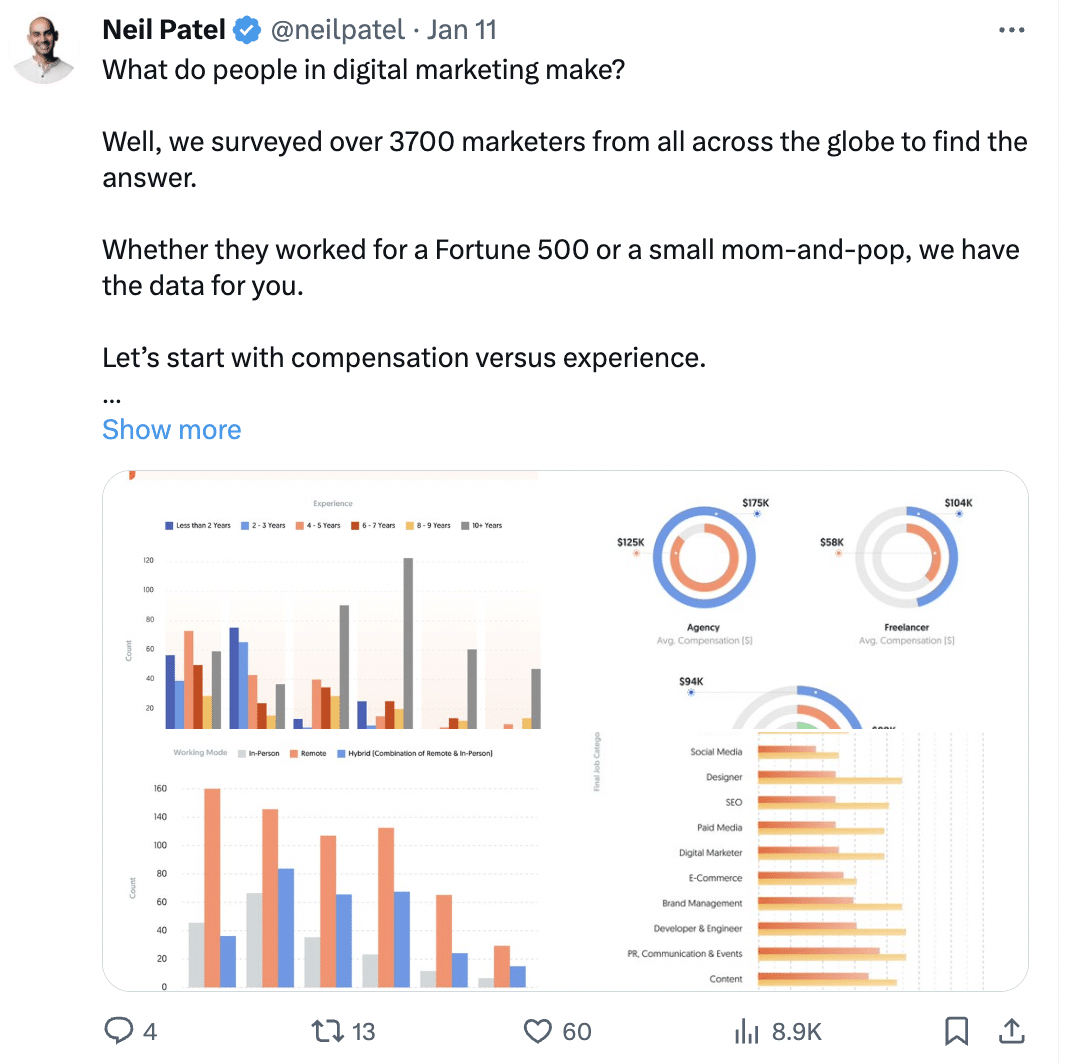
In addition, small excerpts from blog posts or content reviews, or short clips from longer videos are also perfect for retweets.
Pros of Twitter Affiliate Marketing
Here are the advantages of using Twitter for Affiliate Marketing:
-
Massive User Base: With over 300 million active users and 500 million daily tweets, Twitter provides a vast audience interested in your affiliate products.
-
Join the 10% Club: 80% of tweets come from just 10% of users. Being part of this active minority boosts your visibility and engagement in affiliate marketing.
-
Concise Marketing: The 280-character limit allows for short and impactful affiliate marketing messages, capturing attention and enticing users to click on your links.
-
Untapped Potential: Compared to other platforms like Facebook or Instagram, Twitter is less saturated, offering a unique opportunity for affiliates to stand out.
-
User-Friendly Interface: Twitter’s easy-to-use interface is beginner-friendly, allowing anyone to quickly navigate and implement affiliate marketing strategies.
-
Affiliate Program Friendly: Twitter maintains a positive stance towards affiliate programs, providing opportunities to partner with various programs and earn commissions for promoting relevant products or services.
Cons of Twitter Affiliate Marketing
-
Drama-Focused Platform: Twitter has become known for online drama and controversies. Navigating this aspect is crucial to keep your affiliate marketing focused on providing value and avoiding unnecessary conflicts.
-
Questionable Commercial Intent: Twitter’s primary purpose is not commercial, making it challenging to tap into users’ strong purchasing intent. Creating compelling content that resonates and drives action is essential.
-
Automatic Link Blocking: Twitter’s system automatically blocks links considered “unsafe,” potentially limiting the visibility of your affiliate links and hindering your promotional efforts.
-
Character Limitations: The 280-character limit poses a challenge for conveying a comprehensive affiliate marketing message. Crafting engaging content within this constraint requires careful planning and concise writing skills.
Is Twitter Worth It for Affiliate Marketing?
Affiliate marketing on Twitter is a tricky subject. You’ll find some affiliates who claim to earn a full-time income from their followers. However, most of their success comes from promoting affiliate products to people they barely know. It’s safe to assume that their conversion rate isn’t great.
On the other hand, there are legitimate affiliate marketers who use Twitter strategically. They aren’t just hanging out there for fun—they’re making money from their Twitter followers, either by promoting their own products or by affiliating with other products.
In my opinion, Twitter should be an optional part of your affiliate marketing strategy. Use it to drive traffic to your website and monetize it that way. However, don’t expect to make direct sales through your tweets. The level of commercial intent on Twitter is hard to determine.
That’s why it’s important to test the waters before diving in headfirst.
If you need more guidance, sign up for my online business coaching.

Jeff Smith, Founder of High Income Source, is an online business coach with a BBA in Marketing and Entrepreneurship from the University of Pennsylvania. His online business coaching program is so popular that more than 100 students have benefited and started successful online businesses under his guidance.
Jeff started dabbling in online business while he was in college, where he began with dropshipping. After college, Jeff worked at a marketing agency and freelanced as a writer. His breakthrough came when he realized the potential of blogging, leading to a $100,000 sale of a dog-focused website. His expertise includes SEO, affiliate marketing, Amazon FBA, blogging and dropshipping.
